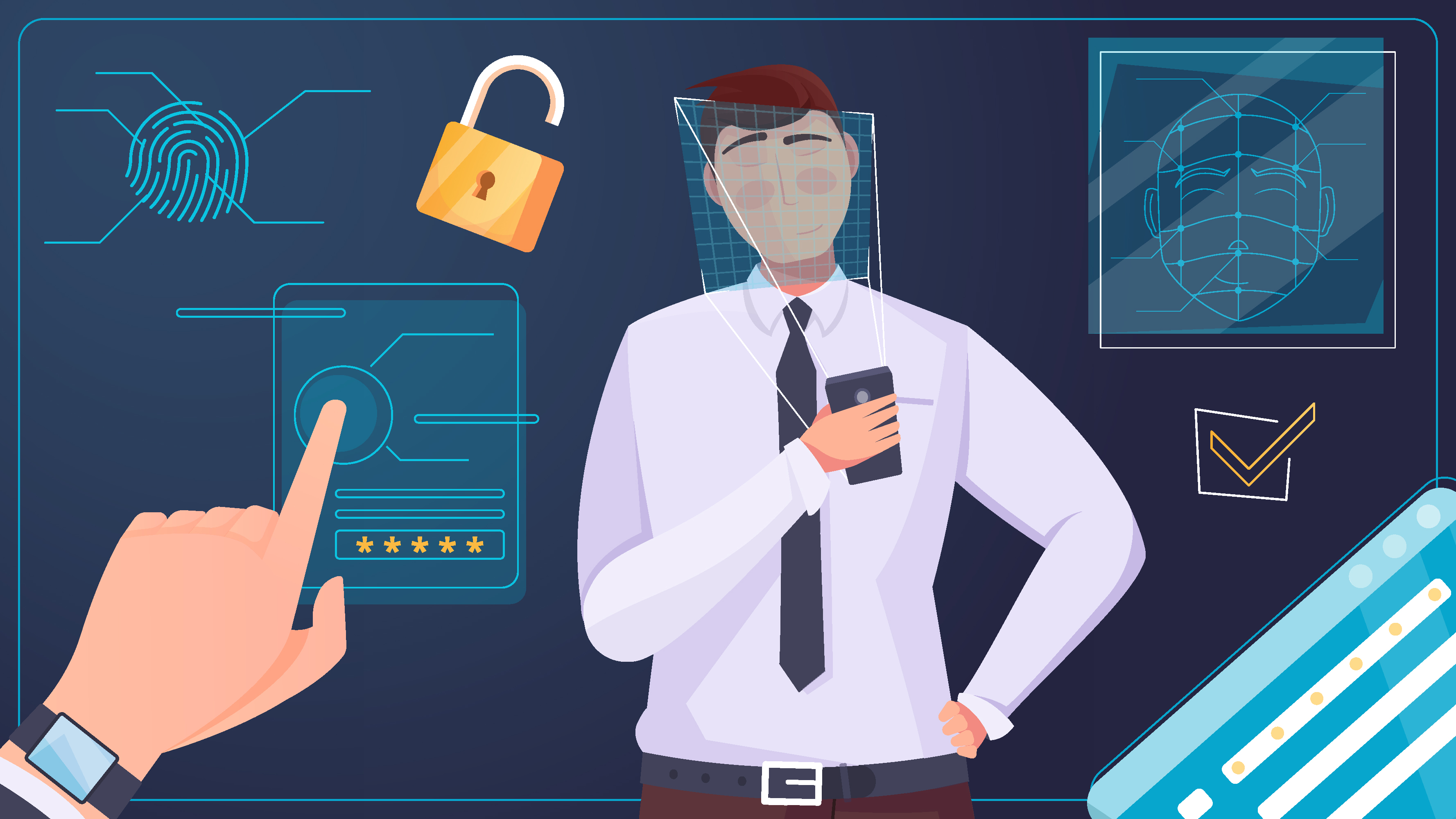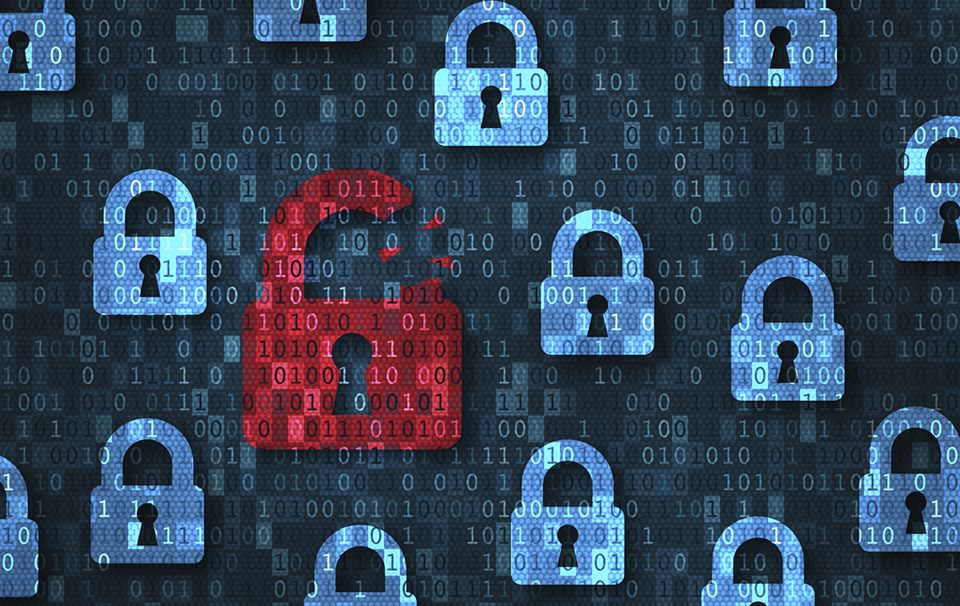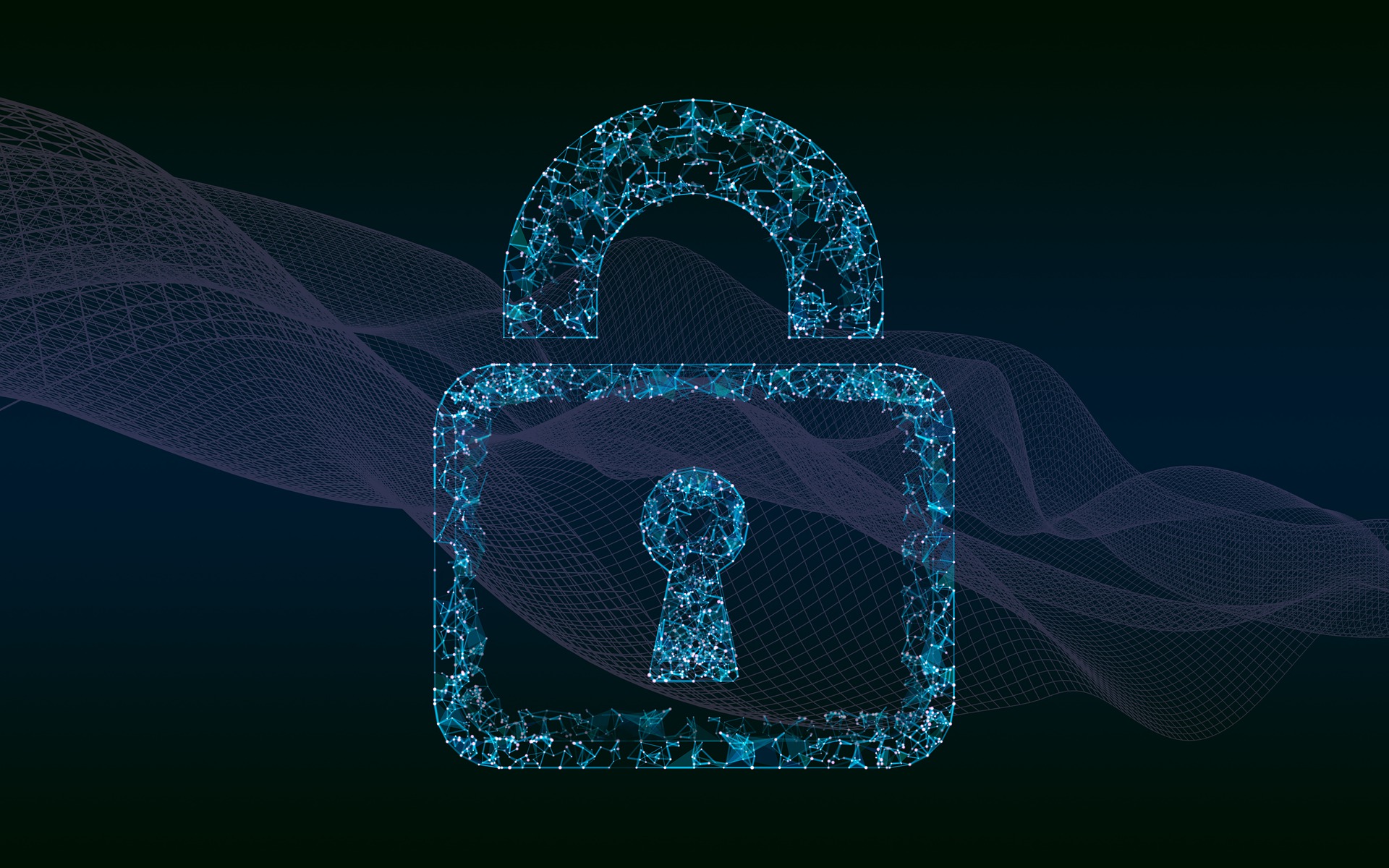
por Rebeca | Abr 12, 2023 | Ciberseguridad, Cliente, Noticias, Recursos, Soffid
El identity and access management (IAM) es un conjunto de procesos y tecnologías que se utilizan para administrar y proteger los datos y recursos de una organización. Se trata de un componente fundamental de la seguridad de la información y es esencial para proteger los datos de clientes, empleados y socios comerciales.
Hablamos de un enfoque sistemático para la gestión de las identidades y los accesos de los usuarios a los recursos de la organización. Esto incluye la identificación y autenticación de los usuarios, la autorización de los usuarios para acceder a los recursos, la gestión de las cuentas de usuario y la supervisión del acceso de los usuarios.
¿Por qué es tan importante una buena gestión y estrategia?
La gestión de identidad y acceso es particularmente importante en un entorno en el que las organizaciones tienen que hacer frente a amenazas cada vez más sofisticadas. Los ciberdelincuentes pueden utilizar una variedad de técnicas para obtener acceso no autorizado a los sistemas de información.
Por tanto, una buena estrategia de IAM incluye la gestión de contraseñas, la autenticación de múltiples factores y la gestión de privilegios. La gestión de contraseñas es especialmente importante, ya que si son débiles o comprometidas, son una de las principales vías por las que los ciberdelincuentes pueden obtener acceso no autorizado.
Además, también ayuda a cumplir con los requisitos legales y normativos. Las leyes y regulaciones relacionadas con la privacidad de datos y la protección de información personal exigen que las organizaciones tomen medidas para garantizar que sólo las personas autorizadas tengan acceso a la información confidencial. La implementación de una estrategia de IAM puede ayudar a cumplir con estos requisitos, lo que puede evitar sanciones y multas.
La gestión de identidad y acceso es esencial para proteger los datos y los recursos de una organización. Con una estrategia de IAM bien diseñada y ejecutada, una organización puede asegurarse de que sólo las personas autorizadas tengan acceso a los recursos y datos necesarios para realizar sus funciones y responsabilidades y así, protegerse contra los ataques no deseados.
Además, se consigue mejorar la eficiencia y productividad de los empleados, mejorar la confianza y la reputación de la empresa frente a sus clientes.
En Soffid proporcionamos todos los servicios necesarios para poner en práctica una correcta implementación de IAM con una garantizando que el sistema cumpla con todos los requisitos de estabilidad, escabilidad y rendimiento.
¿Hablamos?
Fuentes:
- Ionos.es
- techtarget.com

por Rebeca | Oct 26, 2022 | Ciberseguridad
Every company must face the new cybersecurity challenges and for this there is a new approach. «Developing a fully integrated strategic approach to cyber risk is fundamental to manufacturing value chains as they align with the operational technology (OT) and IT environments—the driving force behind Industry 4.0«, Deloitte said recently.
With the advent of Industry 4.0, threat vectors are expanding. That is why new risks must be considered and addressed. The main objective will be to implement a safe, vigilant and resilient cyber risk strategy. When supply chains, factories, customers, and operations are connected, the risks of cyber threats increase. The risks are enhanced and have a greater scope, he added.
Adopting new approaches and challenging conventional thinking is essential in an increasingly digitized world. “In terms of security, if we’re not moving forwards and developing, then we are effectively going backwards because our adversaries will definitely be moving forward,” commented Johnson (partnerships and outreach manager (digital and STEM), founder and director of Women in Cyber Wales)
Technology change has been beneficial to both organizations and its employees. The adoption of technological innovations by organizations has skyrocketed in recent decades. increase global spending on technology across all industries.
The adoption of new technologies brings many benefits to the company. At the same time it comes with risks and free threats. The new technology must fit perfectly into the business. If the right fit is not ensured the sustenance will be at large risk.
The adoption of new technologies to overcome cybersecurity challenges
New technology while adopting create internal conflict in an organization. They are such as managerial, Technological, sociological and economic related. There are several attributes of conflicts and they are usability, interoperability, common business views, agility, scalability, reliability, openness, manageability, infrastructure and security. Here Security assumes major role.
With data breaches continuing to pose a threat to any emerging technology, it’s critical to think about a good investment in cybersecurity. The increase in technology exists in any type of business, from health care, finance, manufacturing, services or any other. In order for these companies to be able to exploit them efficiently and prosper, they must put into practice cybersecurity policies and practices.
It is necessary to adequately analyze the security risks of the technology that will be implemented. In addition, before institutionalizing technologies, effective strategies must be implemented.
Why Security Standards Are Important
Conformance with established standards and best practices is essential for increasing the protection baseline in cybersecurity. Many organisations lack personnel experienced in the domain and, therefore, have a hard time adopting new approaches and techniques. Education is an important component, but in-depth knowledge is hard to transfer.
Thus, certification methodologies that distil certain best practices into structured, easy-to-apply guidelines have an important role in the proliferation of cybersecurity innovation.
The Evolution of Threat Hunting
Threat hunting continues to evolve for organizations that focus on proactively detecting and isolating Advanced Persistent Threats (APTs) that might otherwise go undetected by traditional, reactive security technologies.
While many SOCs are struggling to cope with the current security threat workload, more organizations are adopting threat hunting as part of their security operations. They are discovering that proactive threat hunting can reduce the risk and impact of threats while improving defenses against new attacks.
Source:
(1) cyber-security.com
(2) cio.com
(3) Deloitte.com
(4) cybersec4europe.eu
Picture: Vector de Fondo creado por pikisuperstar – www.freepik.es

por Rebeca | Dic 15, 2021 | Ciberseguridad, Recursos

secure single sign-on solution
The sheer number of tasks we do online grows every year as we create and discover new opportunities to digitize our world. This is true within the workplace as well, but as we find more processes to automate using cloud-based technology and new apps to improve efficiency, we add more risk to the organization. Each tool added to the technology toolbelt, each interface users enter a password on, each app that we connect to via different networks and devices — they all add to our existing attack surface and present bad actors with seemingly unlimited avenues to cause harm if left unchecked.
This is where a secure single sign-on solution comes into play — using one reinforced set of credentials to access all of these tools and resources provides quite a few different benefits to modern organizations. SSO reduces the number of attack vectors your organization has, and SSO layered with multi-factor authentication (MFA) creates useful security and compliance controls. So, how do you find a solution that provides these capabilities and more? The answer is simple — look for an integrated, holistic directory platform that focuses on security and productivity.
Implementing an integrated directory solution provides organizations with a single source of truth for identity management and user authentication while providing built-in SSO and MFA capabilities and more. This is an important step to take to mitigate the risk that is inherent when users have to create and input different credentials across a wide variety of tools and resources, thus creating many unnecessary new attack vectors ripe for the taking.
How do businesses ensure they benefit from the convenience of single sign-on without compromising security?
The risk in SSO exists only if you see SSO as a means to gain access. But by recognizing the inherent security gaps that exist, and compensating by implementing additional controls in the form of multi-factor authentication, contextual access security and session management, you effectively reduce SSO risk, making it a source of elevated productivity and security.
Working in IT is a constant battle to find the perfect balance of security and productivity. This is no better personified than in the need for Active Directory (AD) users to access multiple systems through the use of Single Sign-On (SSO).
SSO solutions
Eliminate the need for users to remember a unique, complex password for each application and platform they access, replacing it with a single logon facilitating access to multiple systems and applications.
Offering faster access times to applications, with reduced password requirements (usually, one), it’s a no-brainer technology that reduces administrative overhead and support costs, while being a non-disruptive technology with a high adoption rate.
It also does come with some security benefits: Since SSO only utilizes a single credential it often equates to requiring a very complex single password. Additionally, the act of disabling access enterprise-wide becomes as simple as disabling the initial account. But, as with any technology designed to improve productivity; there are often losses on the security side. And in the case of SSO, there are some implied security risks.

Single sign-on is an authentication process that allows users to securely access multiple related applications or systems using just one set of credentials. Ideally, once SSO has been set up, employees or customers can sign on just once to gain access to all authorized apps, websites and data from an organization or a connected group of organizations.
SSO works based on a trust relationship established between the party that holds the identity information and can authenticate the user, called the identity provider (IdP), and the service or application the user wants to access, called the service provider (SP). Rather than sending sensitive passwords back and forth across the internet, the IdP passes an assertion to authenticate the user for the SP.
Your trust and data security are our priority
Our focus is on delivering value to our customers through high quality software which is robust, scalable, secure and ready for use 24/7. Soffid will never compromise on the privacy of our users and the security of our platform and product suite. Our team are technology purists who believe in strong encryption, tight and robust privacy controls. We believe in our software so much, we use it ourselves.
Single sign-on (SSO) has been prevalent in many organizations for years, but its importance is often overlooked and underappreciated. With many enterprises moving to the cloud and taking advantage of third-party services, seamless access to multiple applications from anywhere and on any device is essential for maintaining business efficiency and a seamless customer experience.
Single sign-on’s main purpose is to give users the ability to log in to individual apps and resources within a trusted group using a single set of credentials. This makes it much easier for the user, who doesn’t have to sign on multiple times, and more secure for the business, since there are less opportunities for a password to be lost, stolen or reused.
What are the Benefits of SSO?
Your employees and customers probably don’t like memorizing many different credentials for multiple applications. And if your IT team has to support multiple apps, setting up. Switching and resetting passwords for users requires countless hours, IT resources and money that could be spent elsewhere.
Increased Productivity
Single sign-on increases employee productivity by reducing the time they must spend signing on and dealing with passwords. Employees need access to many apps throughout their workday; and they have to spend time logging in to each of them. Plus trying to remember which password goes to which, plus changing and resetting passwords when one is forgotten. Technology the wasted time adds up.
Users with just one password to access all of their apps can skip all that extra time spent logging in. They also won’t need password support as often; and SSO solutions often give them access to a handy dock where all their apps are at their fingertips.
Improved Security
with good practices, SSO significantly decreases the likelihood of a password-related hack. Since users only need to remember one password for all their applications; they are more likely to create solid, complex and hard-to-guess passphrases.
They are also less likely to reuse passwords or write them down, which reduces the risk of theft.
An excellent strategy to provide an additional layer of security is to combine SSO with multi-factor authentication (MFA). MFA requires that a user provide at least two pieces of evidence to prove their identity during sign-on; such as a password and a code delivered to their phone.
Risk-based authentication (RBA) is another good security feature; in which your security team uses tools to monitor user behavior and context to detect any unusual; behavior that may indicate an unauthorized user or cyberattack. For example, if you notice multiple login failures or wrong IPs, you can require MFA or block the user completely.
A recent study by Gartner reveals over 50 percent of all help desk calls are due to password issues. Another study by Forrester reveals password resets cost organizations upward of $70 per fix.
The more passwords a user has, the greater the chance of forgetting them; so SSO drives down help desk costs by reducing the number of required passwords to just one and some organizations. Have been implementing specific password requirements like length and special characters; that may make passwords more difficult for users to remember—a trade off of more secure passwords for more password resets. SSO can help alleviate some of those costs.
Improved Job Satisfaction for Employees
Employees are using more and more apps at the workplace to get their jobs done; and each third-party service requires a separate username and password. This places a lot of burden on workers and can be frustrating. Notably, an average of 68 percent of employees have to switch between ten apps every hour.
Only having to sign on once improves employee productivity, as discussed above; but it also enhances their job satisfaction by allowing them to work without interruption. Quickly access everything they need, and take advantage of all the useful third-party apps that make their jobs easier. Easy access is particularly valuable for employees that are in the field or working from multiple devices.
Sources:
(1) Solution Review
(2) IT News
(3) GovInfoSecurity
Picture: <a href=’https://www.freepik.es/fotos/tecnologia’>Foto de Tecnología creado por DCStudio – www.freepik.es</a>

por Rebeca | Nov 10, 2021 | Sin Categoria
Security and identity challenges

Managing identities and access entitlements is becoming increasingly challenging in a rapidly changing business, regulatory and IT environment, but those challenges are compounded for multinational organisations due to the distributed nature of their operations.
Identity and access management (IAM) is especially challenging for multinational companies that need to manage the identities of employees, partners, customers, consumers and devices wherever the company does business, while also complying with a range of data security and privacy regulations.
The domain of Identity and Access Management (IAM) has evolved over the past two decades. In the beginning, its primary purpose was to meet simple authentication requirements. As the adoption of IAM solutions increased across multiple industries, the need to meet several other requirements became apparent: service password management, single sign-on, multifactor authentication, entitlements, role engineering, authorization, life cycle management, access certification and more.
The accelerated shift to work-from-home
Due to the pandemic also means that SMBs are now more prone to cyberattacks, and the solutions that cater to organizations of all sizes are scant. The landscape of IAM is only becoming more convoluted and straying further away from simple and holistic security.
Converged IAM is one solution to this predicament. An IAM product that converges full suite of access management, authentication, authorization, IGA, PAM and risk analytics solutions in one platform can empower organizations to mature their overall security posture quickly, support identification of indicators of compromises (IOC) proactively and strengthen external as well as internal security maturity. It can also increase employee productivity with daily application usage, password management, single sign-on, access requests, approvals, reviews and more.
The future of IAM
Is not in fragments of different niches stitched together to cover various functionalities. It is in providing a single platform to meet all the IAM demands of today’s digital landscape that is constantly being encroached by threat actors.
Within the broader IAM challenge, there are several other specific challenges facing multinational organisations, often related to the fact that IAM is run differently in each region or location where the company operates. These specific challenges include:
- Being able to deal with customers and employees with identities originally registered in one geography using their identities to access services and systems in another geography.
- Delivering IAM services using different IAM technology stacks, processes, operating models and maturity levels across different company locations.
- Supporting different languages in the different countries where the company operates.
- Ensuring fast time to market for products and services requiring consistent IAM for employees, partners and customers in response to market needs and opportunities.
- Enabling fast, simultaneous rollouts for new applications to new markets.
- Standardisation and automation to reduce costs and risk of in-house solutions.
- Built-in support for the internet of things (IoT), DevOps models and local DevOps teams.
- Retaining control of infrastructure, changes, deployments and interfaces.
- Complying with specific regional and local regulatory requirements in addition to global regulatory requirements in terms of data protection, information security, product safety and quality assurance, export regulation and financial regulation.
Identity and access management is a very common element to regulations, with each type of regulation often setting some requirements for managing IDs, onboarding, identification of customers, authentication, access control and access governance.
To deal with these regulations
Multinational companies need a strong IAM that is flexible enough to be strong in some regions, but more relaxed in others.
On the digital era, the most significant trend is towards the provision and consumption. Of all IT as cloud-based services, including IAM. As a growing number of workloads and IT services move to the cloud. It makes sense to move IAM to the cloud as well. Moving IAM to the cloud helps avoid the integration, management and licensing complexity of hybrid. IT environments where some workloads run on-premise while others run in parallel in the cloud.
However, cloud-based IAM services will still need to support hybrid IT. Environments for the foreseeable future and at the same time. Will need to evolve to include support not only for employees. But also for business partners, customers, consumers and non-human entities that have identities that need to be managed. Such as internet-connected devices that make up the internet of things.
Identity-as-a-service (IDaaS) solutions have appeared on the market in recent years, in line with the as-a-service trend. These IDaaS solutions offer several key benefits that could help multinational organisations. To tackle the challenge of running a global IAM service.
Since first appearing on the market
IDaaS offerings have gradually matured to include identity management. Entitlement management, authentication and authorisation, which are the key components of IAM. Adding the depth required by modern enterprises to reduce security and compliance risk.
The IDaaS market has registered significant growth in the past few years. Because of the ability of IDaaS to enable organisations to:
- Achieve better time-to-value proposition over on-premise IAM deployments.
- Extend IAM capabilities to meet the security requirements of growing software as a service (SaaS).
- Adopt global IAM standards and practices with access to industry expertise.
- Reduce internal IAM costs and efforts to keep up with the market trends.
- Limit internal IAM failures in project delivery and ongoing operations.
However, moving enterprise workloads to the cloud is a long-term journey for most enterprises. Similarly, moving from on-premises IAM to IDaaS services, while at the same time providing end-to-end. Support for IAM capabilities across all target systems, regardless of their deployment model, is also a multi-step journey.
Fuentes:
(1) Computerweekly
(2) Forbes – multinational organisations
Imagen: <a href=’https://www.freepik.es/fotos/tecnologia’>Foto de Tecnología creada por rawpixel.com – www.freepik.es</a>

por Rebeca | Oct 14, 2021 | Ciberseguridad, Soffid
Nowadays, CIOs are focusing on business outcomes, agility, and improving customer experience through technology. While at the same, streamlining backend operations with automation is becoming one of the primary focus areas of technology leaders. Despite this pressing need for digitization in the organization, around 79% of them are still in the early stages of technology transformation, according to Mckinsey. It is due to critical issues related to legacy system barriers such as integration, security, etc., in today’s landscape. So, there is a need to create an environment to provide holistic accessibility to emerging technologies.
The top challenges faced by CIOs in 2021 are as follows:
- Digital Transformation has been evolving slowly. 45% of executives don’t think their company has the right technology to implement a digital transformation. But COVID-19 has forced many organizations to re-examine the pace of their digital transformation initiatives. 35% of companies view digital technology as disruptive to their business model.
- As data becomes more distributed, integrating a large volume of data from different sources in disparate formats on the legacy system is a roadblock. While 97% of organizations planning to undertake digital transformation initiatives, integration challenges hinder efforts for 84% of organizations. So, the CIOs priority in 2021 is how to extract powerful insights by removing the barriers around the data and make data accessible.
- Over the last few years, there has been a massive growth and adoption of new technologies such as AI/ML, data science, etc, across the businesses. As a result, there is a shortage of required skillsets in an organization. According to Forrester, while 75% of businesses have a digital strategy, only 16% claim to have the skills to deliver it.
- The inability of legacy systems to keep up with the business demands because of exorable growth in data and the inability to manage multiple data formats across legacy storage platforms. So, CIOs must make a considered choice for modern data platforms that allows integrating multiple datasets from a variety of sources and create a single view of the data.
- Manual processes and workflows are no longer feasible for many organizations. Automation initiatives that used to put on the back burner are now quickly spun up. CIOs need to start thinking of automation as a liberator of their people rather than as an executioner freeing employee from repetitive tasks to focus on higher productive tasks.
- As CIOs are constantly addressing new and developing business challenges, there is a need to adopt emerging technologies such as AI/ML and IoT to compete and stay ahead of the evolutionary curve. As we enter 2021, we must look beyond the latest trends and develop a mindset that enables them to identify a problem that is looking for an answer.
- Fostering innovation is one of the priorities of CIOs today. But keeping up with the business demand with existing resources has become a challenge. For CIOs to keep up with business demands, new technologies and processes need to be implemented. Innovation can’t happen if there is a massive backlog of business requests in an organization.
- Addressing Evolving Security Threats. As technology advances so too do the methods of exploiting it for nefarious reasons. Hackers have existed if tech has existed, but in recent years their tactics have evolved and show no sign of slowing. In 2021 two of the biggest security challenges CTOs will face are phishing and ransomware. Although phishing is not a new hacking tactic, how it is carried out has evolved. Scammers now use SMS and phone calls to impersonate reputable sources and trick consumers into divulging sensitive information. To combat this, IT leaders must re-think their credential management and foster a strong sense of security awareness across their organization.
- Increased Investment in Edge Computing. Data growth outside of the data center is a new reality for most organizations. These days enormous quantities of data are being generated from remote branches, mobile devices, and IoT smart devices. By 2025, Gartner1 estimates that 75% of enterprise data will be generated and utilized outside of the data center. The need to deploy computing power and storage capabilities at the network’s edge will pose a great challenge to CTOs & CIOs in 2021 and beyond.
- Maintaining Data Privacy & Governance. Although data can be an incredible source of useful insight, the risk that comes with handling it poorly can make it a toxic burden that opens your organization up to penalties, fines, or worse. In 2021 California’s Consumer Privacy Act (CCPA), which is generally seen as “GDPR light,” goes into effect, and many other states will likely follow suit. Strict data privacy regulations are quickly becoming the norm, making data security and governance one of the most pressing challenges for IT leaders.It thus becomes indispensable for you to learn how to lead the new normal.
- Providing a Perfect CX. Digital customer experience is the new battlefield for staying competitive, and the responsibility of delivering a seamless CX falls squarely on IT leaders.
Security issues
One of the biggest tech-related challenges inherent with shifting to a hybrid work model is, without a doubt, security. When work happens within the office, CIOs have a certain level of control over security. They can set specific parameters to keep their networks, data, and sensitive customer and employee information secure. For example, they can restrict access to certain websites or applications, or require two-factor authentication to access certain files or information.
But there’s much less of that control when employees are working remotely. That’s why remote work can pose a much larger security risk than having your team contained to your office. For example, employees generally have less secure Wi-Fi connections when working remotely.
It’s also more difficult to monitor, control, or put safeguards around your employees’ internet usage when they’re working out of the office and/or on their own device—which, depending on their behavior, can add more risk to the companY.
There’s no denying that security is a risk when shifting to a hybrid work model. But CIOs can counteract those risks with effective employee training. If you’re concerned about cybersecurity for your hybrid team, make sure you’re training employees on how they can keep their devices and networks safe and secure when they’re working remotely. For example, you might create a “best practices” training that goes over the basics of cybersecurity, the do’s and don’ts of how to stay secure when working remotely, and some of the most common security issues employees need to be aware of.
Resources:
(1) Gatner
(2) Mckinsey
(3) cioinsight.com
Picture: <a href=’https://www.freepik.es/fotos/cuadrado’>Foto de Cuadrado creado por rawpixel.com – www.freepik.es</a>









